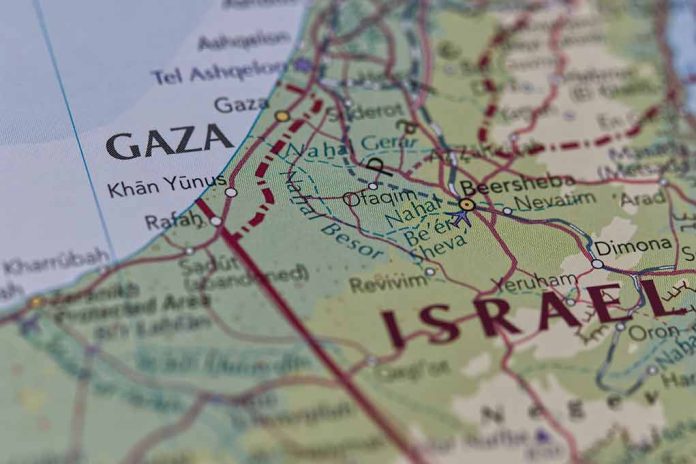
The US military is actively preparing backup strategies in anticipation of a potential breakdown in ceasefire negotiations in Gaza.
At a Glance
- The plan aims to end the war in Gaza after eight months of fighting.
- The US has submitted a draft resolution to the UN Security Council supporting the ceasefire plan.
- President Joe Biden’s three-phase plan focuses on ending the conflict, releasing hostages, and rebuilding Palestinian territories.
- Netanyahu’s stance on Gaza’s southern border is a major obstacle to a ceasefire deal.
- The Pentagon’s strategies include safeguarding non-combatant lives and ensuring freedom of navigation in the Red Sea.
US Military Backup Strategies
The US military is actively formulating backup strategies in response to potential breakdowns in ceasefire negotiations in Gaza. With hostilities ongoing for over eight months, the significance of preparedness cannot be underestimated. These strategies aim to ensure military readiness, secure civilian lives, and collaborate with international allies. The plans showcase a delicate balance between military readiness and diplomatic efforts to stabilize the region amidst an uneasy truce.
“The US military is preparing for the possible collapse of ceasefire talks between Israel and Hamas amid fears that their breakdown could spark a broader regional conflict.”
President Joe Biden outlined a comprehensive three-phase plan crucial to ending the war in Gaza. The plan prioritizes ending the hostilities, releasing hostages, and rebuilding Palestinian territories. This clear and structured approach demonstrates the administration’s commitment to achieving a sustainable peace in the region.
US military draws up plans for collapse of Gaza ceasefire talks https://t.co/UNknEguFRe
— Middle East & Africa (@FTMidEastAfrica) September 6, 2024
Challenges and Obstacles
Israeli Prime Minister Benjamin Netanyahu insists on maintaining control over Gaza’s southern border area with Egypt, known as the Philadelphi Corridor. His stance remains a significant obstacle to reaching a ceasefire agreement. Domestic reasons and pressure from his far-right coalition partners compel Netanyahu to keep the option of resuming fighting open, further complicating the negotiation process.
Despite the challenges, the US remains committed to supporting a ceasefire plan and submitted a draft resolution to the UN Security Council. This international cooperation emphasizes the global effort to bring stability to Gaza and support humanitarian efforts.
“The U.S. is set to present a final ‘take it or leave it’ proposal that would force Netanyahu and Hamas leader Sinwar to decide whether they’ll swallow their pride and compromise. Rejecting it will greatly increase the chances of a regional war.”
Humanitarian and Strategic Aspects
The humanitarian situation in Gaza is dire. The MV Cape Trinity recently completed offloading 6 million pounds of humanitarian aid in Ashdod, contributing to a total of over 38 million pounds of aid delivered. These efforts illustrate the ongoing commitment to addressing the humanitarian crisis in Gaza, amidst tense negotiations and military strategies.
Secretary of Defense Austin departed for Ramstein Air Base in Germany to host the 24th meeting of the Ukraine Defense Contact Group (UDCG), which will focus on enhancing Ukraine’s air defense capabilities. This highlights the broader strategic engagements the US military is undertaking.
Though the Pentagon has ruled out leading a UN military peacekeeping force, it is intensely focused on ensuring freedom of navigation in the Red Sea and safeguarding non-combatant lives in anticipation of a ceasefire breakdown. These measures underscore the importance of preparedness and strategic action in maintaining regional stability.
Sources
1. US military draws up plans for collapse of Gaza ceasefire talks









